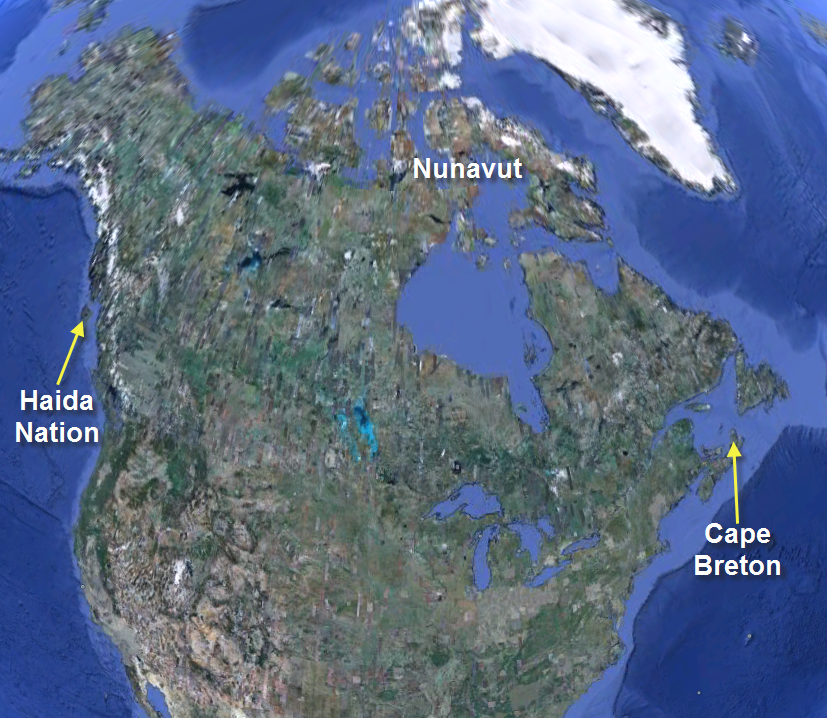Communities that are isolated from the mainstream population often develop distinct, rich cultures, based on a firmly established set of values and practices. There are many examples of these communities in Canada, from sea to sea to sea.
Yet, a strong set of values is no guarantee that community or its culture will persist. And what holds true for communities, also applies to organizations and groups.
Communities and cultures under siege
Haida people have occupied Haida Gwaii, on Canada’s Pacific north-west coast, since time immemorial. The aboriginal Haida Nation population was in the tens of thousands in pre-contact times. With the arrival of the explorers in the 18/19th centuries, and smallpox, pre-contact population in tens of thousands was reduced to 600. Entire villages were lost. Traditions were lost. Structures were pillaged. A few years ago I visited the Chicago Museum, and was astonished to see a large showroom filled with Haida (and other west coast aboriginal art) artifacts, removed from Haida communities to meet the needs of the 1893 Chicago World’s Fair. Today, the Haida work hard to gain autonomy over their lands, return stolen artifacts, and put their values into practice.
 In the Canadian North, on the Arctic Ocean, is Nunavut, our largest federal territory. The people are mostly aboriginal, with Inuit forming the bulk of those people. And like the Haida, the Inuit have not entirely benefited from contact. Long-standing values and practices, which were communicated to younger Inuit through stories and song, have been interrupted by outside influences and new institutions. Inuit are looking for ways to build these beliefs (e.g., storytelling) into what we do today so that once again these beliefs become the value system for Nunavut.
In the Canadian North, on the Arctic Ocean, is Nunavut, our largest federal territory. The people are mostly aboriginal, with Inuit forming the bulk of those people. And like the Haida, the Inuit have not entirely benefited from contact. Long-standing values and practices, which were communicated to younger Inuit through stories and song, have been interrupted by outside influences and new institutions. Inuit are looking for ways to build these beliefs (e.g., storytelling) into what we do today so that once again these beliefs become the value system for Nunavut.
And on Canada’s east, Atlantic coast, is an island community I’ve visited many times, Cape Breton. Initial island inhabitants were ancestors of the Micmaq aboriginal peoples. During the first half of the early 19th century, the Highland Clearances saw an influx of 50,000 Scots to Cape Breton, who brought their rich musical traditions with them. The community and culture remained almost untouched for almost 150 years. Today, a causeway connects the island to the mainland, economic realities see much of the local population working in Alberta oil patch, and cultural traditions are being impacted.
What keeps the community flame burning?
Across these three different communities, I see three common attributes being applied today:
- Re-commitment to core values
- Celebrating the best of features of the community; e.g., through arts and culture
- Adapting strategies, congruent with values, to the current situation
And in your community?
- What are your organizations guiding principles and values?
- How do you appreciate the core strengths and attributes of the people you work with?
- How are you adapting your organizational strategies and actions to current possibilities?
And for you?
- What and your personal beliefs and values?
- What is unique about you?
- Are you aligning your values with your current thoughts and actions?
And if you’re having difficulty with answers to the above, maybe it’s time to go offline, and re-connect with your core, in your outpost of choice! Make sense?
If you enjoyed this post, please consider leaving a comment or subscribing to my blog. Thanks, Ben.
Photo credit: Sam Beebe / Ecotrust


Speak Your Mind